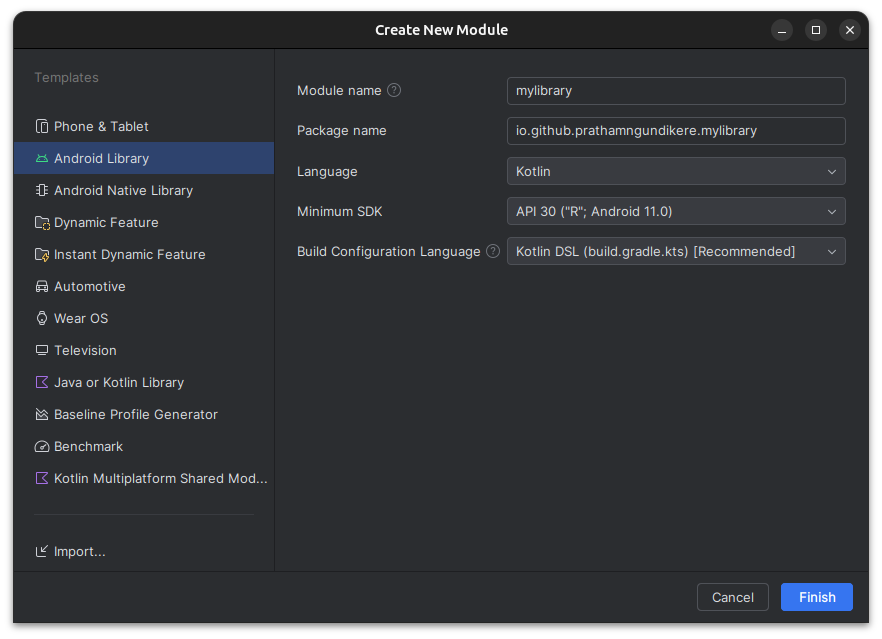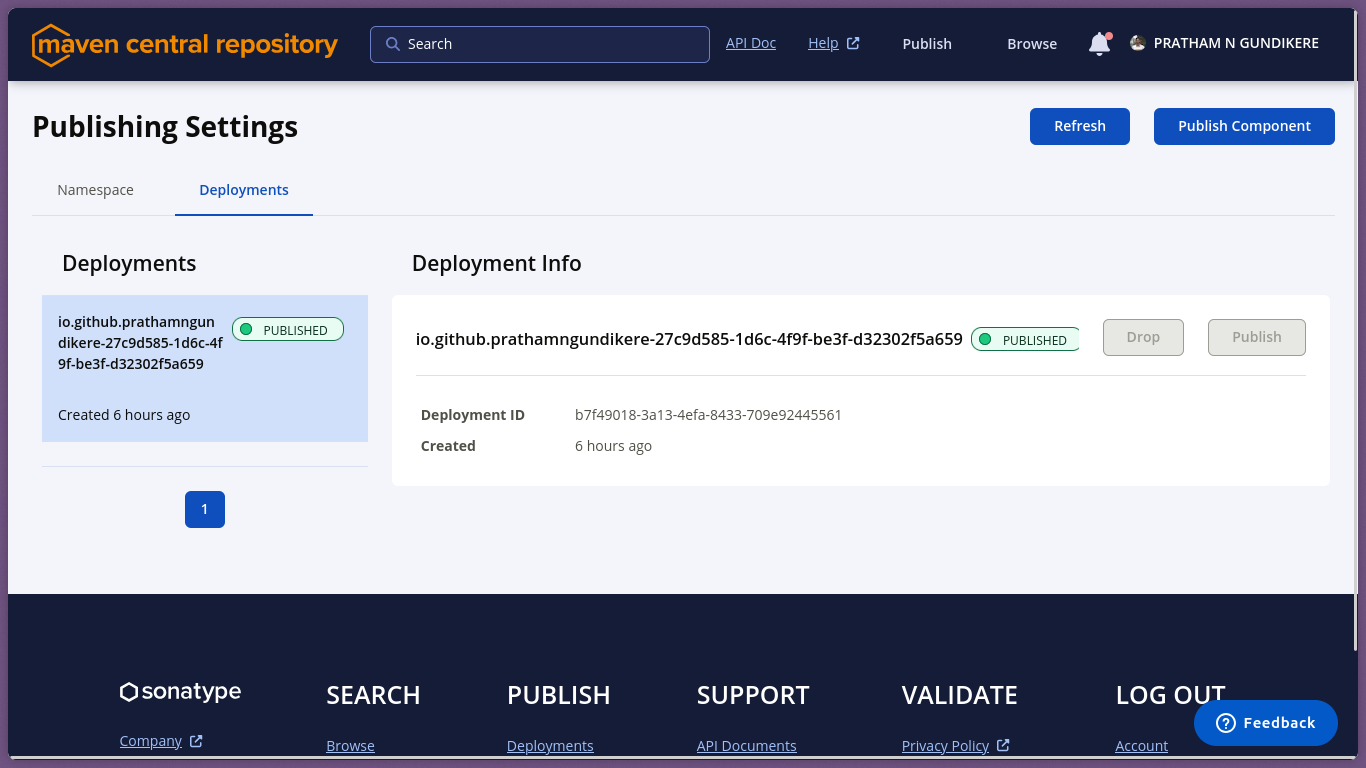Creating Android Library and hosting it Maven Central the Easy way
Hosting the Android Library has always been hard, this blog make it easier.

Hosting Library has always been tough. Here in this blog I give clear steps on how to host a Android Library on Maven Central.
Prerequisites
Before hosting your Android library on Maven Central, ensure you have the following:
- Sonatype Account – Create an account at Sonatype’s Central Repository.
- Namespace Creation – Register and verify your namespace at Sonatype Central. This namespace is usually based on your domain (e.g.,
com.example).
This video here can help with namespace and more -> Click Here
Set GPG Key
You need to install GnuPG. Using HomeBrew is much easier on Mac and Linux. Again Check this video -> Click Here.
Here is few important commands from the video
gpg --full-gen-keygpg --list-keysgpg --keyserver keyserver.ubuntu.com --send-keys <KEYS>- `gpg –armor –export-secret-keys | pbcopy
echo "<WHOLE-KEY>" | gpg --dearmor > ~/my_secring.gpg
Setting Android Library
Create a new Project and Inside create a new Android Library

Create a new file in the Library
HelloWorld.kt
package io.github.prathamngundikere.helloworld
import androidx.compose.material3.Text
import androidx.compose.runtime.Composable
import androidx.compose.ui.Modifier
@Composable
fun HelloWorld(modifier: Modifier = Modifier) {
Text(
text = "Hello World !!!",
modifier = modifier
)
}
build.gradle.kts (:helloworld)
import com.vanniktech.maven.publish.SonatypeHost
plugins {
alias(libs.plugins.android.library)
alias(libs.plugins.kotlin.android)
alias(libs.plugins.kotlin.compose)
id("com.vanniktech.maven.publish") version "0.31.0"
id("com.gradleup.nmcp") version "0.0.8"
}
android {
namespace = "io.github.prathamngundikere.helloworld"
compileSdk = 35
defaultConfig {
minSdk = 30
testInstrumentationRunner = "androidx.test.runner.AndroidJUnitRunner"
consumerProguardFiles("consumer-rules.pro")
}
buildTypes {
release {
isMinifyEnabled = false
proguardFiles(
getDefaultProguardFile("proguard-android-optimize.txt"),
"proguard-rules.pro"
)
}
} compileOptions {
sourceCompatibility = JavaVersion.VERSION_11
targetCompatibility = JavaVersion.VERSION_11
}
kotlinOptions {
jvmTarget = "11"
}
buildFeatures {
compose = true
}
}
dependencies {
implementation(libs.androidx.activity.compose)
implementation(platform(libs.androidx.compose.bom))
implementation(libs.androidx.ui)
implementation(libs.androidx.ui.graphics)
implementation(libs.androidx.ui.tooling.preview)
implementation(libs.androidx.material3)
}
mavenPublishing {
coordinates("io.github.prathamngundikere", "helloworld", "1.0.0")
pom {
name.set("Hello World")
description.set("Android Library to import the Hello World Text")
inceptionYear.set("2025")
url.set("https://github.com/prathamngundikere/HelloWorld_Android_Library/")
licenses {
license {
name.set("The Apache License, Version 2.0")
url.set("http://www.apache.org/licenses/LICENSE-2.0.txt")
distribution.set("http://www.apache.org/licenses/LICENSE-2.0.txt")
}
} developers {
developer {
id.set("prathamngundikere")
name.set("PRATHAM N GUNDIKERE")
url.set("https://github.com/prathamngundikere/")
}
} scm {
url.set("https://github.com/prathamngundikere/HelloWorld_Android_Library/")
connection.set("scm:git:git://github.com/prathamngundikere/HelloWorld_Android_Library.git")
developerConnection.set("scm:git:ssh://git@github.com/prathamngundikere/HelloWorld_Android_Library.git")
}
} publishToMavenCentral(SonatypeHost.CENTRAL_PORTAL, automaticRelease = true)
signAllPublications()
}
build.gradle.kts
// Top-level build file where you can add configuration options common to all sub-projects/modules.
plugins {
alias(libs.plugins.android.application) apply false
alias(libs.plugins.kotlin.android) apply false
alias(libs.plugins.kotlin.compose) apply false
alias(libs.plugins.android.library) apply false
id("com.vanniktech.maven.publish") version "0.31.0" apply false
id("com.gradleup.nmcp") version "0.0.8" apply false
}
Now add gradle.properties to .gitignore :
mavenCentralUsername=USERNAME
mavenCentralPassword=PASSWORD
signing.keyId=<LAST 8 LETTERS>
signing.password=<KEYRING PASSWORD>
signing.secretKeyRingFile=/home/prathamngundikere/my_secring.gpg
RUN and sync.
Finally run
./gradlew publishAndReleaseToMavenCentral --no-configuration-cache
You can push the entire thing to github and make it open source.
Finally you get something like this in Maven Central
